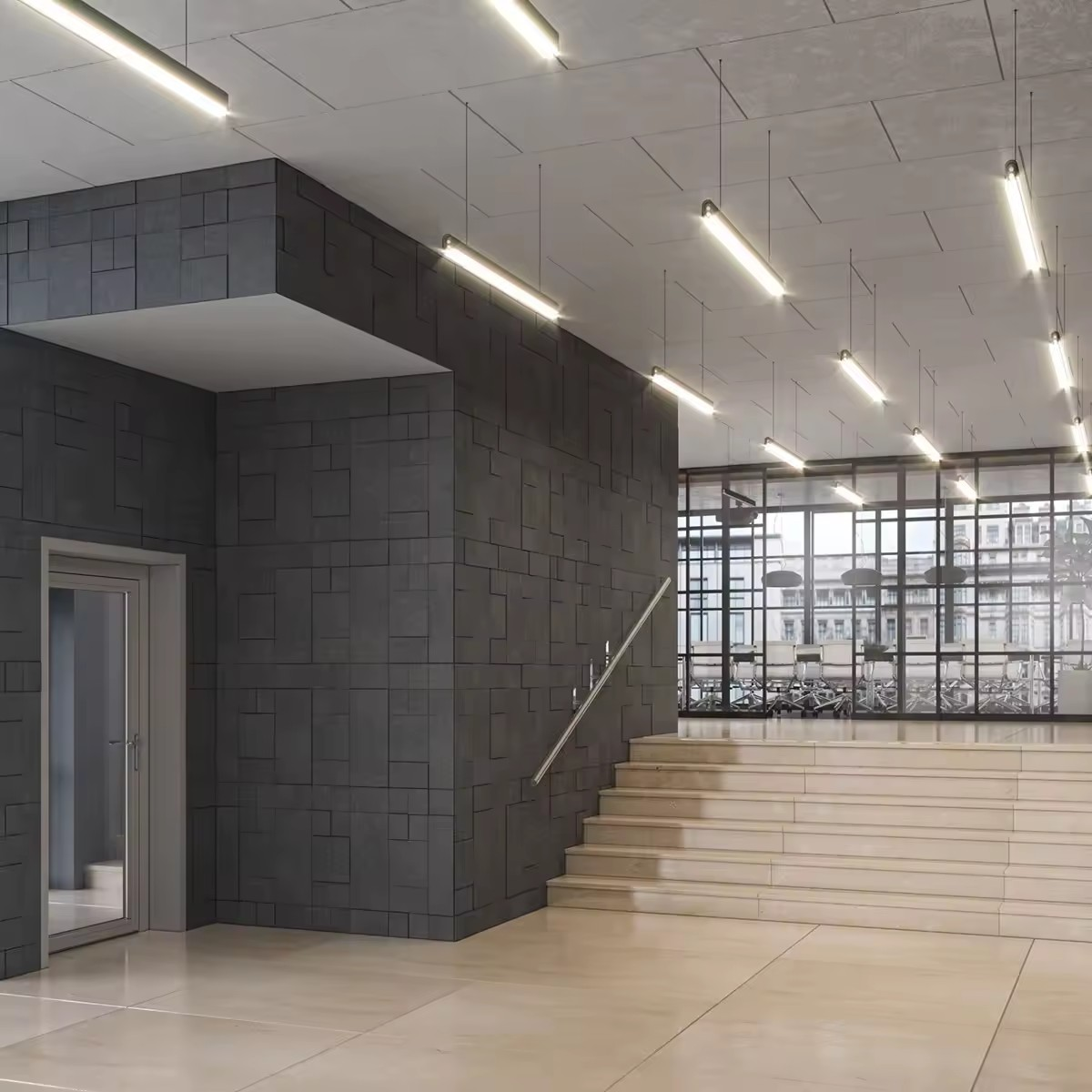Acoustic Wall Cladding Enhancing Sound Quality in Modern Spaces
In our increasingly noisy world, the importance of sound management in interior environments has gained significant attention. Acoustic wall cladding has emerged as a practical solution for addressing the challenges of noise pollution in various settings, from residential homes to commercial offices, and even in public spaces like auditoriums and restaurants. This article explores the benefits, types, and applications of acoustic wall cladding and its role in creating conducive and comfortable environments.
Understanding Acoustic Wall Cladding
Acoustic wall cladding refers to specially designed materials applied to walls for sound absorption and soundproofing. These materials are engineered to reduce echoes, control the reverberation of sound, and minimize the transmission of noise between rooms. By using various design principles and materials, acoustic wall cladding effectively manages sound waves, leading to a more pleasant auditory experience.
The Importance of Acoustic Management
Sound plays a crucial role in how we experience our surroundings. In busy urban environments, excess noise can lead to stress and hinder communication. Inside a building, unwanted noise can disrupt meetings, affect focus, and reduce overall comfort. Acoustic wall cladding addresses these challenges by enhancing the quality of sound and creating an environment that promotes productivity and well-being.
Benefits of Acoustic Wall Cladding
1. Noise Reduction The primary function of acoustic wall cladding is to absorb sound waves, which reduces noise levels and minimizes distractions. This is particularly beneficial in open office spaces, where sound can travel freely and affect concentration.
2. Enhanced Privacy Acoustic wall cladding can improve privacy in shared spaces by reducing the sound transmission between rooms. This is essential in healthcare facilities, educational institutions, and corporate environments where confidentiality is crucial.
3. Better Sound Quality In environments like recording studios, concert halls, or even restaurants, the control of sound quality is vital. Acoustic cladding helps in achieving desired acoustics by managing sound reflections and preventing ringing.
4. Aesthetic Appeal Acoustic wall cladding comes in various designs, colors, and textures, allowing it to be integrated seamlessly into the interior design of any space. This means that functionality does not compromise aesthetics.
5. Sustainability Many modern acoustic wall cladding materials are made from recycled or sustainable resources. This not only contributes to a greener planet but also meets the growing demand for environmentally responsible construction practices.
Types of Acoustic Wall Cladding
Acoustic wall cladding comes in various forms, each with its own unique properties and applications
acoustic wall cladding

1. Soft Panels Typically made from fabric-covered foam or mineral wool, these panels are effective at absorbing sound and can be customized to fit any décor.
2. Wooden Slats These panels not only offer aesthetic warmth but also provide sound absorption qualities. They can often be seen in high-end restaurants and corporate offices for a sophisticated look.
3. Perforated Metal Panels Combining durability and functionality, these panels are used in commercial spaces for their ability to withstand wear while still providing acoustic benefits.
4. Acoustic Tiles Available in various sizes and configurations, acoustic tiles can be easily installed in both new and existing spaces, making them a flexible option for sound management.
Applications of Acoustic Wall Cladding
The applications of acoustic wall cladding are vast and varied
1. Office Spaces In open-plan offices, acoustic wall cladding helps reduce noise distractions, leading to improved focus and productivity.
2. Educational Institutions Classrooms and lecture halls benefit significantly from sound absorption, which aids learning outcomes and reduces ambient noise.
3. Healthcare Facilities Hospitals and clinics use acoustic wall cladding to create peaceful environments that promote healing and reassure patients regarding privacy.
4. Public Venues Restaurants, theaters, and conference centers use acoustic cladding to enhance sound quality, making them more enjoyable for patrons.
5. Residential Spaces Homeowners can utilize acoustic wall cladding to minimize external noise and enhance the comfort of their living environments.
Conclusion
Acoustic wall cladding is undoubtedly an essential element in modern architecture and interior design. By balancing functionality with aesthetic appeal, it addresses the critical need for improved sound management across various environments. As awareness of the impact of acoustics on our well-being continues to grow, the demand for effective solutions like acoustic wall cladding will undoubtedly increase, paving the way for quieter, more harmonious spaces. Whether for work, study, or relaxation, acoustic wall cladding offers an effective means of crafting an environment that enhances our quality of life.
-
Snuffle Ball Benefits for Indoor DogsNewsAug.22,2025
-
Building Acoustic Panels for Classroom NoiseNewsAug.22,2025
-
Installation Best Practices for Acoustic Art PanelsNewsAug.22,2025
-
Health Benefits from Noise-Reducing Hex Acoustic PanelsNewsAug.22,2025
-
Creative Shapes Using Felt Panels Acoustic DesignsNewsAug.22,2025
-
Polyester Acoustic Panels in Modern Office PodsNewsAug.22,2025
